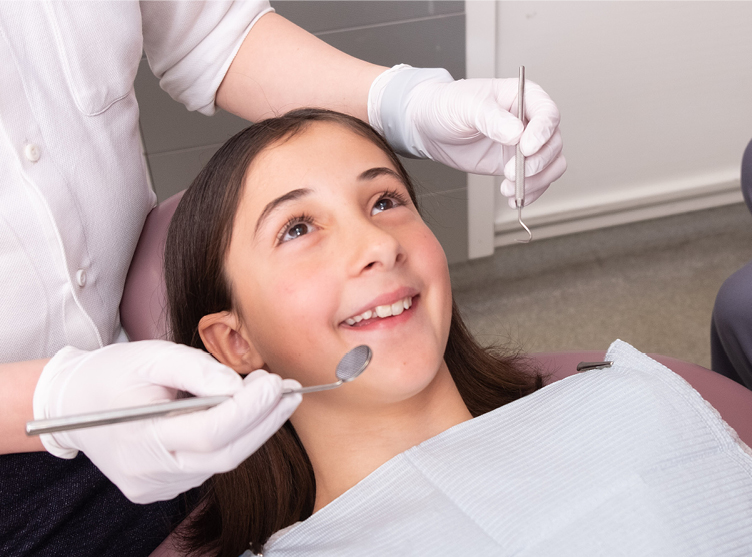Legacy Orthodontics Fundamentals Explained
Legacy Orthodontics Fundamentals Explained
Blog Article
7 Easy Facts About Legacy Orthodontics Shown
Table of ContentsThe 10-Minute Rule for Legacy OrthodonticsHow Legacy Orthodontics can Save You Time, Stress, and Money.Unknown Facts About Legacy OrthodonticsThe Basic Principles Of Legacy Orthodontics The 6-Minute Rule for Legacy Orthodontics
In addition, we supply adjustable treatment routines, versatile repayment options and an enjoyable, delightful experience.An orthodontist is a dental professional trained to detect, protect against, and deal with teeth and jaw abnormalities. Orthodontists function with people of all ages, from youngsters to adults.
Malocclusion, or misaligned teeth, can lead to dental concerns, consisting of dental caries, gum illness, and difficult or painful chewing. Not everyone is birthed with straight teeth. If you have a negative bite or large spaces in between your teeth, you may intend to get in touch with a dental professional concentrating on orthodontic treatment.
Some Known Facts About Legacy Orthodontics.
( Image Credit Report: DigitalVision/Getty Images) Orthodontists utilize dealt with and removable oral gadgets, like dental braces, retainers, and bands, to change the setting of teeth in your mouth. Orthodontic therapy is for dental problems, consisting of: Jagged teethBite issues, like an overbite or an underbiteCrowded teeth or teeth that are too far apartJaw misalignmentThe objective of orthodontic treatment is to improve your bite.
A healthy bite ensures you can consume, eat, and talk correctly. While you might think about orthodontists as generally for kids or teenagers who require dental braces, they can remedy dental issues at any type of age. Orthodontists go to college, oral college, and orthodontic college. After graduation, they invest 2 or 3 years in an orthodontic residency program.
All orthodontists are dental professionals, however not all dental practitioners are orthodontists. Orthodontic residency programs use extensive, focused instruction for dental professionals. They concentrate on 2 areas: How to properly and securely move teeth How to effectively lead development in the teeth, jaw, and faceOnce an orthodontist has actually finished training, they have the choice to come to be board accredited.
Excitement About Legacy Orthodontics
Imbalance, or malocclusion, is one of the most usual factor individuals see an orthodontist. It is hereditary and is the result of dimension distinctions between the upper and reduced jaw or in between the jaw and teeth. Malocclusion results in tooth overcrowding, an irregular jaw, or irregular bite patterns. Malocclusion is typically treated with: Your orthodontist connects metal, ceramic, or plastic square bonds to your teeth.
Some individuals need a headgear to help relocate teeth right into line with stress from outside the mouth. A retainer is a customized device that keeps your teeth in area.
They're frequently utilized on youngsters. They can create extra space in the mouth without needing to draw teeth. If you have a significant underbite or overbite, you could need orthognathic surgical treatment (also called orthodontic surgery) to extend or shorten your jaw. Orthodontists utilize wires, medical screws, or plates to sustain your jaw bone.
You might need to see an orthodontist if you have: Crowding or Click This Link otherwise adequate area for all of your teethOverbite, when your top teeth come over your bottom teethUnderbite, when your base teeth are also far forwardSpacing or problems with gapsCrossbite, which is when your upper teeth fit behind your base teeth when your mouth is closedOpen bite or a vertical gap between your front base and top teethMisplaced midline, when the center of your base and top teeth don't align Remedying an oral malocclusion can: Make attacking, eating, and talking easierImprove the balance of our face and your total appearanceEase discomfort from temporomandibular joint disordersSeparate your teeth and make them easier to clean up, assisting stop dental caries or tooth cavities It's commonly a dentist that initially notices misaligned teeth during a regular test.
10 Easy Facts About Legacy Orthodontics Explained

Throughout your initial orthodontic appointment, you'll likely have: An oral examPhotos taken of your face and smileDental X-raysPanoramic (360 degree) X-rays of your face and headImpressions to create mold and mildews of your teethThese tests will aid your orthodontist know how to wage your therapy. leesburg braces. An orthodontist is a dental practitioner who's had training to treat your teeth and jaw
An orthodontist is concentrated on your bite, so something like a damaged tooth would be handled by a dental practitioner. Orthodontists are concentrated on your bite, or the method your teeth fit with each other, and the straightness of your teeth.
Ever before wondered how celebrities constantly seem to have perfectly lined up teeth? The response usually exists in the proficient hands of an orthodontist. What precisely does an orthodontist do? Orthodontists are oral specialists who concentrate on fixing abnormalities in the teeth and jaws. Their expertise goes beyond just developing a gorgeous smile; it encompasses enhancing your overall dental health and feature.
Legacy Orthodontics for Dummies

While braces are one of the most typically identified orthodontic treatment, orthodontists have a diverse toolkit at their disposal. The particular method chosen depends on the severity of the instance, the individual's age, and individual choices. These reliable dental braces use a system of braces adhered to the teeth and attached by cables.
Clear aligners, like Invisalign, are a preferred option for clients seeking a more very discreet treatment alternative. These detachable trays are personalized to gradually move the teeth's setting. Headwear may be made use of combined with braces or aligners to use added targeted forces, particularly for remedying jaw inconsistencies. In cases of narrow jaws, palatal expanders can be made use of to develop room for appropriate tooth alignment.
Report this page